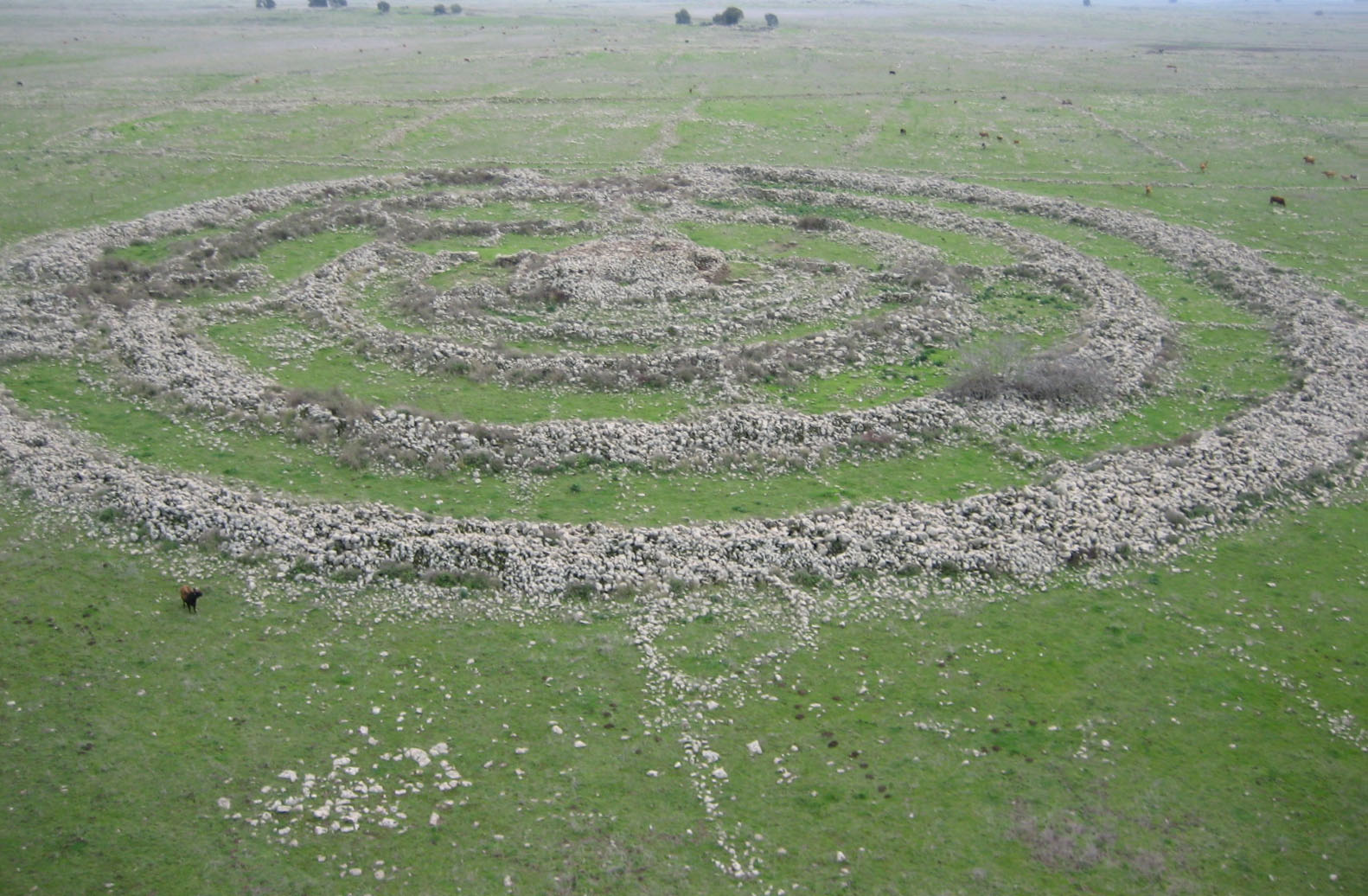Around 5,000 years ago someone built a massive, Stonehenge-like structure on the Golan Heights in Israel. But we have no clue who or why -- was it an ancient race of giants?
WHAT’S MISSING
Knowledge about who built, and for what purpose, Gilgal Refaim — the Stonehenge of Israel.
A couple thousand years before the Israelites settled the Land of Israel, someone built a massive stone structure up in the Golan Heights. Forty thousand tons of basalt stones were arranged in five circles 150 meters in diameter, making it look like a giant bullseye from the air. It was first built around 3,500 BCE, making it older than the Egyptian pyramids and roughly the same age as England’s Stonehenge.
WHY WE CARE
Gilgal Refaim means “Wheel of Giants.” The site is associated with the Rephaim — an ancient race of giants in the area whom Abraham encountered when he settled in the Land of Canaan. Later, the Israelites under Moses defeated the last king of the Rephaim, King Og, in the city of Edrei, present day Daraa, Syria. Gilgal Refaim lies in his territory. Did these giants build the site? It’s possible that the Israelites assumed so, or later associated the site and its attendant mysteries with having been built by these Rephaim. The Torah also describes the Rephaim as spirits of the underworld capable of interacting with humans.
But putting aside biblical legends, someone built this huge structure. But we don’t know who, why, exactly when, or how. Still, it’s pretty far off the beaten tourist track in Israel.
THEORIES ABOUT ITS PURPOSE
Several theories have been put forward, all of which have scant evidence, and all of which have significant holes in them. Whoever built and used the site left virtually no trace of themselves — no inscriptions, no leftover fire pits with clues to their diet, no bones, no nothing. Whatever artifacts there ever were there were long ago taken away. So the answer remains elusive. Some possibilities:
It was a tomb. The central structure at the bullseye is built like a tomb. If the Torah’s reference to King Og’s bed (see below) is actually a reference to the size of his final resting place, might this have been for him?
It’s a sky burial. The dead were laid out in the open air to be eaten by vultures. But no bones have ever been found.
It was an astronomical observatory and seasonal calendar. A couple of the openings in the rings and the central structure closely align with the summer equinox.
It was a ritual center and communal gathering place for celebrating new harvests and thanking the gods.
FUN FACTS
The Hebrew root of rephaim is rafah, and means “to heal.” Doctors are called rophim.
The Torah associates King Og as a giant because of the size of his bed: 13 feet long, 6 feet wide, and made of iron.
Although the central tomb was robbed long ago, the looters dropped a single small copper pin on their way out the door, which was found in 2010.
One Israeli archeologist estimated that 100 laborers working every day would have taken 25 years to build it — a tall order for what was a sparsely settled land with a largely nomadic people.
© Jason Harris 2019
Gilgal Refaim. Photo credit: Wikipedia.

